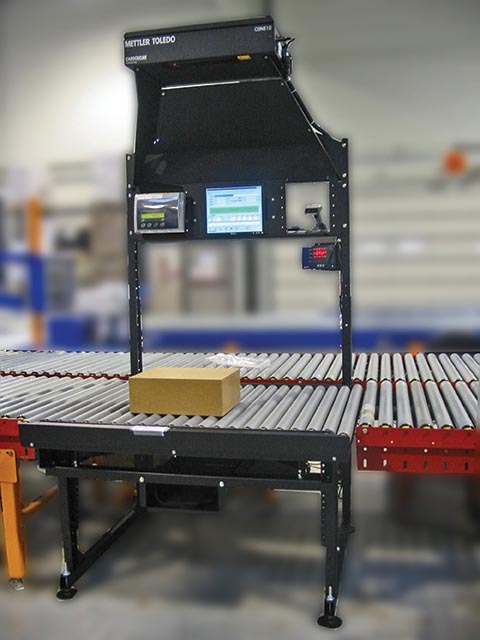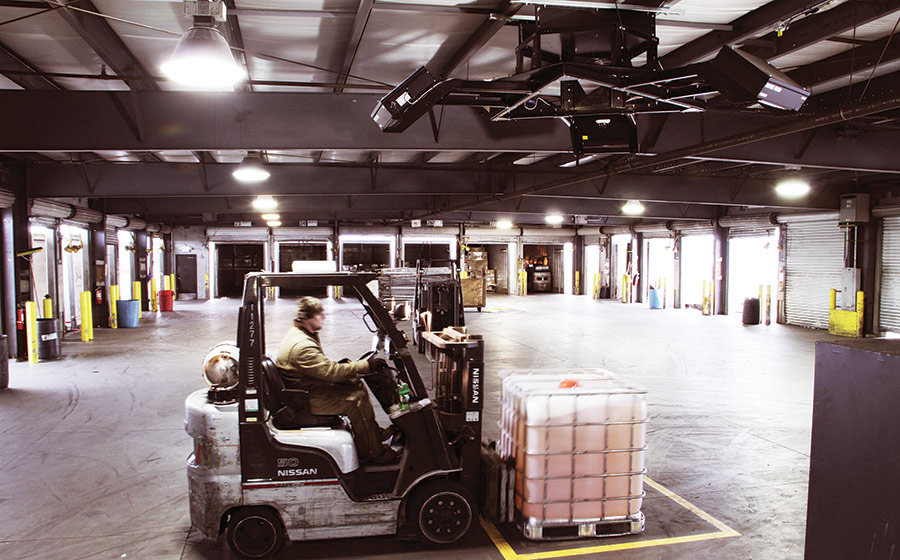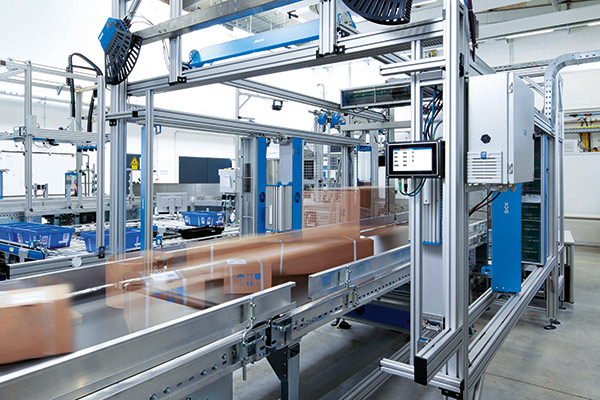Go back 30 years and dimensioning equipment was a somewhat unproven if not radical idea.
Today, it is not just established, but it’s an essential component to managing inventory in the distribution center and shipping department, on over-the-road trailers, and in the billing cycle of parcel and pallet load carriers. And by all indications, dimensioning equipment is getting more important as you read this.
Just this summer, UPS raised the table stakes for correctly measuring the dimensional weight of shipments. If shippers mis-state the dimensional weight of a parcel or pallet, a surcharge will follow.
Multiply that by the growth of e-commerce, not to mention steady growth in irregularly shaped packages.
Then, add in the steadily increasing need for making best use of the cube in the distribution center and the over-the-road trailer.
So what have you got? Nothing more than an equation for broader use of weighing and cubing systems.
Why bother?
The two primary beneficiaries of cubing and weighing systems are DCs—especially e-commerce ones—and freight carriers.
Quite simply, dimensioning systems collect and share critical inventory data from the time that product of all types and sizes arrives at the DC until it’s delivered to the final customer.
“Dimensional data is worth more than people think. This data is critical across the supply chain,” says Clark Skeen, chairman of Cubiscan.
Skeen continues to explain how dimensional data also allows DC mangers to make best use of real estate in their facilities. By dimensioning inventory and feeding the data into a warehouse management system (WMS), DC managers can maximize slotting efficiency. Suddenly, cube space utilization is maximized, reducing storage costs. “If DC managers don’t store inventory optimally, they may have to build another facility unnecessarily,” he adds.
 While this practice is not new, “the leaders are on top of it,” says Tommy Guest, national account manager at Rice Lake. He estimates that 10% of cubing and weighing system sales are tied to this application today.
While this practice is not new, “the leaders are on top of it,” says Tommy Guest, national account manager at Rice Lake. He estimates that 10% of cubing and weighing system sales are tied to this application today.
Then, there’s the packaging and shipping process: the sweet spot of cubing and weighing systems.
Starting in 2017, UPS and FedEx changed how they assess shipping charges for packages from small parcels to full pallet loads. The U.S. Postal Service follows the same practice.
Instead of using the actual weight, the carriers use what is known as dimensional weight. This multiplies the three dimensions of the package (also known as total package volume) and divides it by a factor to arrive at what is known colloquially as the “dim weight.” Shipping charges are then assessed according to that number. The actual weight of the package or pallet is no longer used to determine the shipping charge.
This summer, UPS went one step further when it imposed a surcharge for incorrect dim weights supplied by shippers. The list of these shipping charge corrections includes incorrect or missing package dimensions, incorrect or missing package dimensions that result in a correction to the dim weight, and incorrect weights.
Suddenly, cubing and weighing systems are anything but nice to have. Assessing back charges days later to recover the surcharge is impractical at best. For most, that makes cubing and weighing systems essential when that need is magnified in the e-commerce realm.
“It goes beyond getting the dim weight right,” says Jason Wiley, business manager for transport and logistics at Mettler-Toledo Cargoscan. “Shippers are increasingly seeing a need for more efficient handling in shipping as volumes and sizes increase rapidly. Dimensioning systems are part of the solution here.”
Furthermore, dim weight is applying increasing pressure to reduce the size of all packages, explains Randy Neilson, president of Cubiscan. “This is about putting more packages in polybags and taking out as much air as possible from boxes,” he adds. Neilson estimates that half of shippers are far along on this developmental curve at this point.
Just as cubing and weighing systems help to cube out the DC, they do the same with trailers. And that helps to reduce costs for carriers whether full load or LTL.
Part of the flow
On the surface, cubing and weighing systems appear to be just one more opportunity to slow the flow of goods at the DC as well as on trailers. Not so, says John Ashodian, SICK’s segment manager for logistics automation. In fact, “the dimensioning process is getting smoother as the technology advances,” he adds.
Very little time is actually needed to accurately dimension shipments. Suppliers generally say it takes less than a second for parcels and only two seconds for pallets. Systems with cameras dimension more quickly than those without.
One supplier, Rice Lake, says it takes only 0.2 seconds to weigh and dimension parcels. “Even at that speed, high accuracy is assured,” says Guest of Rice Lake.
Beyond receiving, slotting and shipping, dimensioning systems have other applications, too.
Pick-and-pack operations as well as right-sizing packages are key. The ability to measure items that will go into a shipping box prior to packing maximizes efficient use of packages, minimizing size whenever possible. After all, the smaller the shipping package’s dimensions, the lower the shipping cost.
Beyond dimensioning, the cameras on some of the systems provide an image of the package prior to shipment. If it arrives damaged on the other end, the claims process is simplified with the availability of an image of the package’s condition upon shipment.
“When people realize all that these systems can do for their operations,” says Guest, “there’s not much grumbling about adding them to their facility, especially when they hear about the fast payback.”
The ROI for cubing and weighing systems is generally short. Suppliers all agree that some applications pay for themselves in as little as three months with 18-month payback on the high end.
“The number of orders and receipts a day have a direct impact on ROI,” says Neilsen. He points out that those companies and supply chains that incorporate cubing and weighing information into other data streams typically realize even greater returns on their investment in the equipment.
With so many uses, dimensioning equipment comes in many shapes and sizes—and with good reason. There’s a range of items being measured from packages just 2 inches in height to full pallet loads. Mobility of the equipment ranges from handheld units to fixed-position systems on the DC floor or ceiling.
Some systems dimension and weigh static packages in the packing department, while others sit over conveyors and dimension packages as they move through a tunnel. Still others are ceiling mounted and dimension a full pallet load as a lift truck drives underneath.
The technology differs, too. Some use cameras, others do not. Scales can be part of the system, but not always.
As would be expected, product development is active. Earlier this year at the Modex show, Mettler-Toledo previewed a pallet dimensioner mounted on a lift truck. Cubiscan is also introducing a large-format, pallet dimensioning system that dimensions freight as it passes underneath the system on a forklift.
SICK offers a new handheld dimensioner for both LTL and 3PL applications. Meanwhile, Rice Lake’s lowest-cost unit now interfaces directly with UPS Worldship.

Full pallet loads can be weighed and dimensioned on the fly.
Looking to the future
In fact, cubing and weighing data is becoming increasingly important far beyond the applications already discussed here, say experts. “Increasingly, there is inherent value in having connected data at the shipment location and across the supply chain,” says Ashodian.
“Cubing and weighing data closes the shipping loop across the supply chain. It’s real-time information that goes far beyond a package’s status. It becomes part of predictive analytics and reducing uncertainty in the supply chain. The equipment eliminates the what-ifs,” adds Ashodian.
As Neilson points out, the data collected by the equipment is valuable far beyond its immediate use. By feeding the information into related databases, dimensional data already aids other processes in the supply chain. Going forward, he fully expects the importance of this information to have broader application and acceptance.
In fact, Wiley at Mettler-Toledo says dimensioning equipment will be part of the change in how parcels and pallets are handled in the future. “This equipment will have to interface with warehousing and shipping systems using artificial intelligence, not to mention autonomous vehicles inside and outside the four walls of the DC.”
Another major driver here is Amazon, says Guest. He expects sales of cubing and weighing systems to double in the next five years as e-commerce volumes continue to increase rapidly.
Perhaps Skeen of Cubiscan puts it best. As he has said before, “those who realize the value of dimensional data will prosper. Those who don’t will be wasteful and uncompetitive.”
Companies mentioned in this article
Article topics








